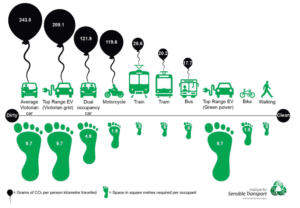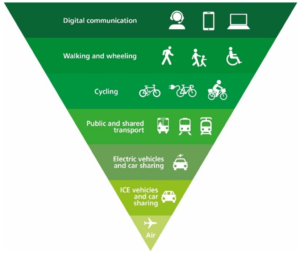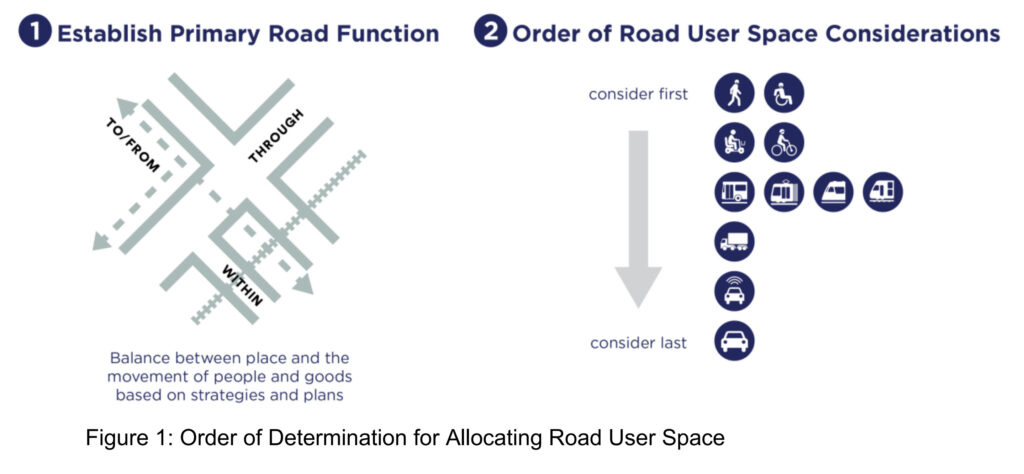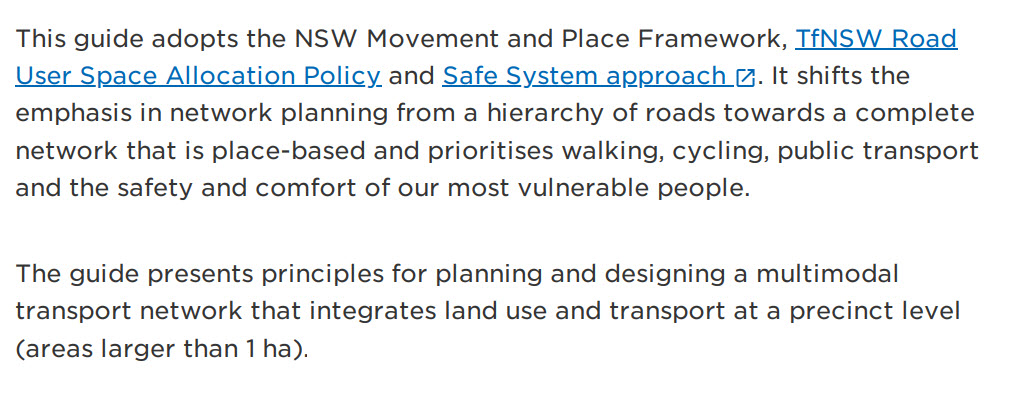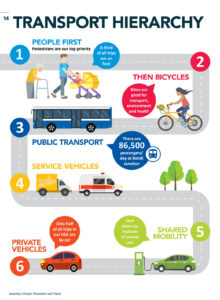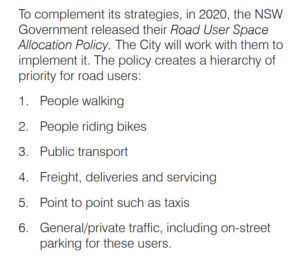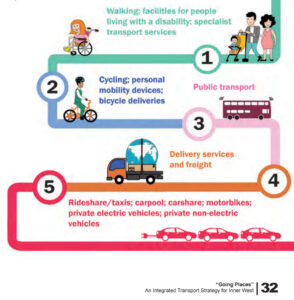What is the Transport Hierarchy?
The road user hierarchy (also known by various other names) is a hierarchy of modes of passenger transport prioritising green transport. (Wikipedia) The hierarchy represents the order of priority for modal shift. (NHS England)
This hierarchy can take various forms, globally aligning with walking and cycling being at the top: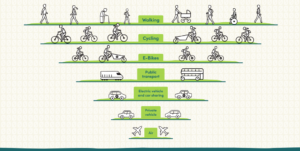
The image above by the Institute for Sensible Transport shows why these priorities are justified: walking, bicycling, and public transport require less space and create less pollution than automobile travel. (Applying a Sustainable Transportation Hierarchy, Todd Litman)
The sustainable travel hierarchy. The most sustainable mode of transport (digital communication) is at the top of the hierarchy followed by walking and wheeling, cycling, public and shared transport, electric vehicles and car sharing, ICE vehicles and car sharing, finishing with the least sustainable (air travel) at the bottom. (NHS England)
Nowadays, an established road user hierarchy forms part of many state and local transport planning authority strategies. (The Australian Transport Assessment and Planning (ATAP) Guidelines)
NSW Government policy
TfNSW Road User Space Allocation policy
This Policy applies to the entirety of the public road reserve from boundary to boundary on proposed
and existing classified roads in built up areas in regional and metropolitan NSW except for motorways
When allocating road user space based on the network vision and road functions, consider all
road users in order of:
- walking (including equitable access for people of all abilities);
- cycling (including larger legal micro-mobility devices);
- public transport;
- freight and deliveries; and
- point to point transport ahead of
- general traffic and
- on-street parking for private motorised vehicles
Access the policy via this link or download the TfNSW Road User Space Allocation Policy Jan 2021.
This policy forms part of the current TfNSW Designing for Pedestrians and Bicycle Riders course designed to give traffic and transit professionals a thorough grounding in current NSW best practice for TfNSW staff, council officers and traffic & transport consultants.
Movement and Place
Road User Space Allocation (RUSA) and Network Planning in Precincts Guide (The strategic design and planning of transport networks to support 15-minute neighbourhoods and 30-minute cities):
(RUSA) aims to reduce private motor vehicle trips within built-up areas to support efficient movement and enhance the amenity of places. Anyone in TfNSW involved in the planning, design, scheme approval, building, management or operation of roads in NSW needs to adhere to this policy. These principles should be adhered to ahead of any guidance that seeks to protect or maintain the level of service for private vehicles. (Movement & Place website)
BIKEast stance
BIKEast accepts and endorses this transport hierarchy as policy for the state and local organisations to plan and design infrastructure accordingly.
Local government examples in Sydney
City of Sydney has endorsed the hierarchy as part of their Access strategy and action plan under Strategy B: Reallocate street space
Inner West Council has endorsed the hierarchy as part of their Integrated Transport Strategy under Section 5: Transport Vision, Values, Priorities and Principles.
